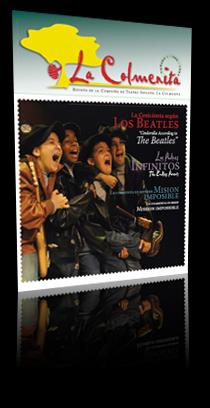TIPTOEING INTO Fairytale land
It’s way past 4:00 pm on a Wednesday afternoon.
In the middle of the stage, a dozen students of 3, 4, 5 and 6 years of age spin around on the toe tips, their arms up in the air as they let an intake of fresh air fi ll up their lungs. Next to them, a professor watches closely and checks their every move. “Emily, keep your chin up, and keep up your pace, Jose.”
Iraida Malberti has been for a mighty long time the director of the Cuban Television Children’s Ballet. Her other two major achievements are that she gave birth to that child of any age who runs by the name of Tim Cremata and that she’s the mother of La Colmenita. Yet we’re focusing today on the less-known side of Iraida, the ballet workshop professor. She has many things to say because she has already let her actions speak louder than her words.
“Our goal –she says- is not to form dancers for acting, but actors for dancing. However, it’s hard to tell them apart. Dancers are actors too, only that they express feelings through body moves, with a very special vocabulary that the public understands perfectly well. Nearly all major ballet plays are fairytales narrated in the language of dancing. “That explains why the basics for any actor or actress with an attitude is in ballet.
Being able to dominate the body, to express oneself through the body, to execute movements on the stage with the necessary plasticity, and dance well to the beat of music are all key elements,” she goes on to say. The queen bee, as many old-timed beehive dwellers call her, recalls how Malu Tarrau, the little costar of the “Viva Cuba” fi lm and one of the most successful actresses within La Colmenita, has owed so much to ballet, “especially in the way she walks, her elegance and attitude.
That’s something kids start acquiring from the very fi rst lesson, something that meets the eye in no time.” Just like everything going around the company her son runs, in Iraida’s classes children learn by playing, or play by learning. Th is excellent and veteran teacher also gets kicks out of it as she steers the so-called “ages of roles.”
With her young-looking eyes, her conspirator’s voice and a quasi-childish smile on her face, she lets us in on a few little secrets. “A boy rides on a broomstick and says that’s a horse, and he gallops away neighing. But don’t try to doubleride behind him and ask him to ride because he won’t do that. Kids need fi rst to incorporate the character.
In this sense, our job takes a lot of patience and diff erentiation. For instance, I insist with boys on their roles as soldiers, clowns, woodcutters and wolves. In the case of girls, they’re princesses, ballet dances and fl owers. “As to the workshop, I enjoy each and every minute of it. And even though I’m very demanding, I feel children do love me and are happy with my lessons.”
A few minutes from now, Laurita is going to play Cinderella, while Luisito will play the Prince. Marla, Daniela, Lucia and the rest of the girls will play fl owers in the woods, and the boys will be the trees. Classical music blares out in the hall. Th e movements begin, the waltz, the wind, the tree leafs. Kids attending this ballet workshop forget about the real world, and taken by Iraida’s hand they tiptoe into fairytale land.


